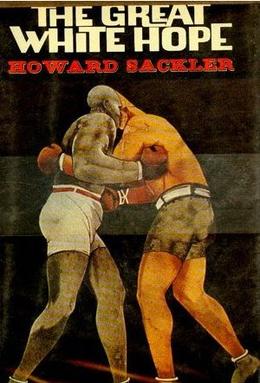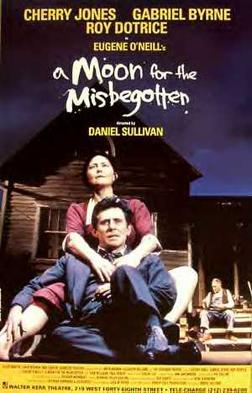
The Great White Hope is a 1967 play written by Howard Sackler, later adapted in 1970 for a film of the same name.

No, No, Nanette is a musical with a book by Otto Harbach and Frank Mandel based on Mandel's 1919 Broadway play My Lady Friends; lyrics by Irving Caesar and Harbach; and music by Vincent Youmans. The farcical story centers on three couples who find themselves together at a cottage in Atlantic City, New Jersey, in the midst of a blackmail scheme focusing on a fun-loving Manhattan heiress who has run off, leaving an unhappy fiancé. Its songs include the well-known "Tea for Two" and "I Want to Be Happy".

Joel Grey is an American actor, singer, dancer, photographer, and theatre director. He is best known for portraying the Master of Ceremonies in the musical Cabaret on Broadway and in Bob Fosse's 1972 film adaptation. He has won an Academy Award, a BAFTA Award, a Golden Globe Award, and a Tony Award. He earned the Lifetime Achievement Tony Award in 2023.

Linda Lavin is an American actress and singer. She is known for playing the title character in the sitcom Alice and for her stage performances, both on and off-Broadway.
The Norman Conquests is a trilogy of plays written in 1973 by Alan Ayckbourn. Each of the plays depicts the same six characters over the same weekend in a different part of a house. Table Manners is set in the dining room, Living Together in the living room, and Round and Round the Garden in the garden.
A. J. Antoon was an American theatre director. He attended the Yale School of Drama. Beginning in 1971, Antoon directed numerous plays at the New York Shakespeare Festival over a period of nearly 20 years. In 1973, Antoon became one of the few directors to have been nominated for two Tony Awards in the same category in the same year. In addition to winning the Tony Award with one of his nominations, Antoon was also the winner of a Drama Desk Award, a New York Drama Critics' Circle Award, and an Obie Award. His career lasted until 1991; he died less than a year later from AIDS-related lymphoma.
Douglas Carter Beane is an American playwright and screenwriter. He has been nominated for five Tony Awards and won two Drama Desk Awards. His plays are essentially works with sophisticated, "drawing room" humor but just as often farce, particularly his work in musical theater.

Dance With Me is a musical written by Greg Antonacci. It opened on Broadway on January 23, 1975, and ran at the Mayfair Theatre for 396 performances. The musical was directed and choreographed by Joel Zwick.

A Moon for the Misbegotten is a play in four acts by Eugene O'Neill. The play is a sequel to O'Neill's Long Day's Journey into Night, with the Jim Tyrone character as an older version of Jamie Tyrone. He began drafting the play late in 1941, set it aside after a few months and returned to it a year later, completing the text in 1943 – his final work, as his failing health made it physically impossible for him to write. The play premiered on Broadway in 1957 and has had four Broadway revivals, plus a West End engagement.

The House of Blue Leaves is a play by American playwright John Guare which premiered Off-Broadway in 1971, and was revived in 1986, both Off-Broadway and on Broadway, and was again revived on Broadway in 2011. The play won the Drama Critics' Circle Award for Best American Play and the Obie Award for Best American Play in 1971. The play is set in 1965, when Pope Paul VI visited New York City.

Don't Bother Me, I Can't Cope is a musical revue first staged in 1971 with music, lyrics and book by Micki Grant. It was originally produced by Edward Padula.
A Memory of Two Mondays is a one-act play by Arthur Miller. He began writing the play in 1952, while working on The Crucible, and completed it in 1955. Based on Miller's own experiences, the play focuses on a group of desperate workers earning their livings in a Brooklyn automobile parts warehouse during the Great Depression in the 1930s, a time of 25 percent unemployment in the United States. Concentrating more on character than plot, it explores the dreams of a young man yearning for a college education in the midst of people stumbling through the workday in a haze of hopelessness and despondency. Three of the characters in the story have severe problems with alcoholism.

John Arthur Lithgow is an American actor. He studied at Harvard University and the London Academy of Music and Dramatic Art before becoming known for his diverse work on stage and screen. He has received numerous accolades including six Emmy Awards, two Golden Globe Awards, and two Tony Awards as well as nominations for two Academy Awards, a BAFTA Award, and four Grammy Awards. Lithgow has received a star on the Hollywood Walk of Fame in 2001 and was inducted into the American Theater Hall of Fame in 2005.

Home is a play by David Storey. It is set in a mental asylum, although this fact is only revealed gradually as the story progresses. The four primary characters are seemingly benign Harry, highly opinionated Jack, cynical Marjorie, and flirtatious Kathleen. As they interact we come to realize their delusions and pretensions are similar to those of people living in a supposedly normal society.
Patricia Zipprodt was an American costume designer. She was known for her technique of painting fabrics and thoroughly researching a project's subject matter, especially when it was a period piece. During a career that spanned four decades, she worked with such Broadway theatre legends as Jerome Robbins, Harold Prince, Gower Champion, David Merrick, and Bob Fosse.
Melvin Bernhardt was an American stage and television director. He was born and raised in Buffalo, New York, and much of his work has been in the New York City area. He is known for his productions of The Effect of Gamma Rays on Man-in-the-Moon Marigolds, Da, and Crimes of the Heart. Bernhardt began his career as a stage manager; he made his directorial debut in 1965 with Conerico was Here to Stay at the Cherry Lane Theatre.
Michael Rudman was an American theatre director.

Josh Grisetti is an American actor, director and author who works in theatre, television and film.
Sir Michael Victor Codron is a British theatre producer, known for his productions of the early work of Harold Pinter, Christopher Hampton, David Hare, Simon Gray and Tom Stoppard. He has been honoured with a Laurence Olivier Award for Lifetime Achievement, and is a stakeholder and director of the Aldwych Theatre in the West End, London.











